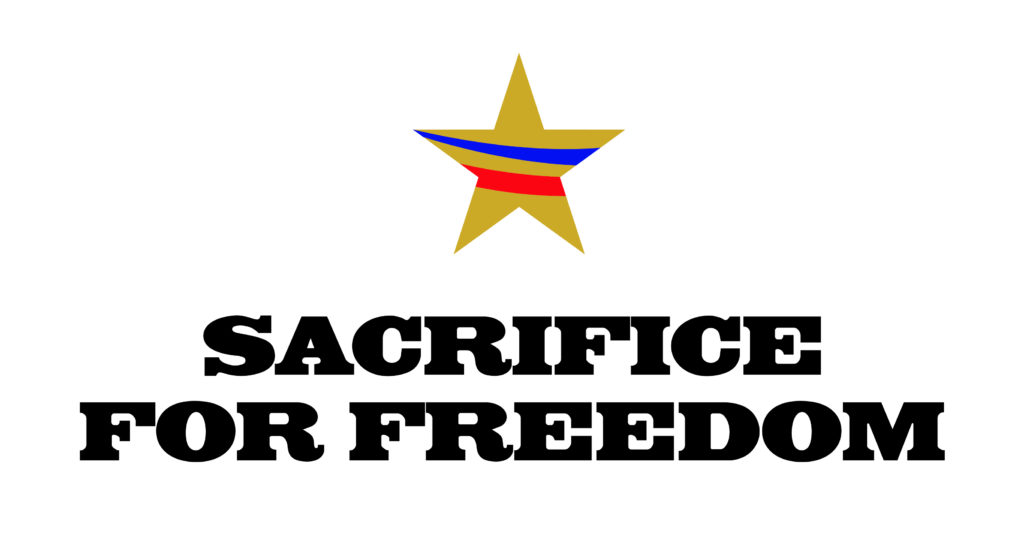Lieutenant Charles William Wilson
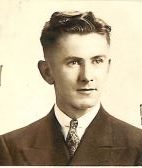
- Unit: Task Force 58, Fighter Squadron V-F 45, USS San Jacinto
- Service Number: O-112751
- Date of Birth: March 11, 1915
- Entered the Military: April 29, 1941
- Date of Death: April 6, 1946
- Hometown: Ridgeway and Tecumseh, Michigan
- Place of Death: eight miles north of Kita Daito Jima, Japan
- Award(s): Bronze Star, Distinguished Flying Cross, Purple Heart, Air Medal with Two Gold Stars, Presidential Unit Citation
- Cemetery: Courts of the Missing, Court Two. National Memorial Cemetery of the Pacific, Honolulu, Hawaiʻi
Mentored by Mrs. Jan Mecoli Klco
Whitehall High School
2022/2023
Early Life
Childhood
Charles William Wilson was born March 11, 1915, to Iva B. Gove and Leon S. Wilson in Ridgeway, Michigan, located in Lenawee County, about 60 miles southwest of Detroit. He was an only child. While growing up, Wilson and his parents lived with his maternal grandparents, Charles and Alzina Gove. The family moved from Ridgeway to nearby Adrian, then to Tecumseh, where he attended Tecumseh High School from 1930 to 1933, running track for the school’s team.
High School and College
Sometime during 1935, Wilson moved north to Gaylord with his parents to live with his paternal grandparents, William and Jennie Wilson. During that time, he became a student in Michigan State College’s Division of Agriculture. Before finishing college, Wilson enlisted for four years in the U.S. Naval Reserves. He graduated on June 14, 1941, with a Bachelor of Science degree in Forestry. After college, Wilson joined the active service as an Aviation Cadet.
Married Life
On June 9, 1942, Wilson married Maxine Estella Leighton, a nurse and fellow Tecumseh High School graduate, in Macon, Michigan. A year later, the couple welcomed their first child, a baby girl named Ann Elizabeth Wilson. On April 4, 1945, while Wilson participated in the Battle of Okinawa, the family’s second child, Charles Edward Wilson, was born.
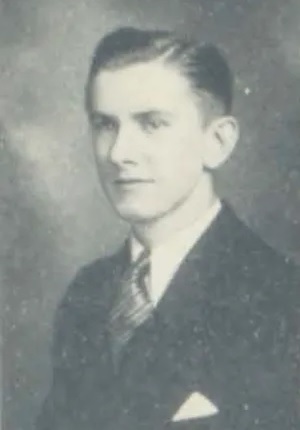

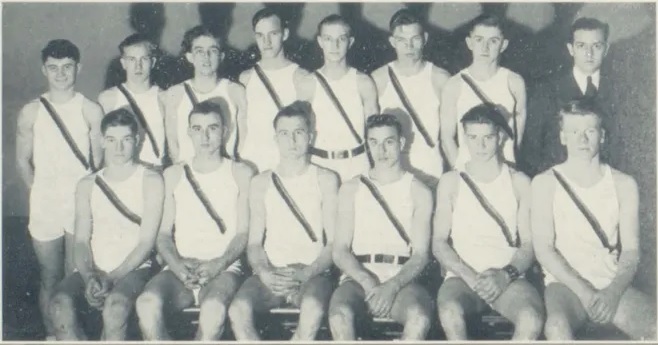
Homefront
While Lieutenant Wilson was deployed, back home in Lenawee County, most companies retooled and expanded their businesses, supporting the war.
Stepping Up
Because so many men joined the armed forces, it created a vast workforce gap. Women, Mexican Americans, and migrant workers all stepped up, increasing the rural county’s population by 22% between 1940 and 1945. Magnesium Fabricators, Inc. was the first company in the county to hire Mexican American workers. Many other companies employed a large number of women.
Industry
Companies like Hurd Lock & Manufacturing, Bohn Aluminum and Brass Corporation, and Kewaunee Manufacturing produced multiple pieces for bomber and fighter planes, such as engine parts, finished castings, brake lines, high-powered pumps, and aluminum sheets. They also developed tank parts, anti-aircraft and armor-piercing shells, specialized tools, and radios, as well as cabinets, cases, and crates for navy ships. In addition to weapons, other Lenawee County manufacturers supplied many pieces of the service members’ uniforms and kits.
Agriculture
Lenawee County was primarily agricultural. During World War II, the Morenci Egg Drying Company produced 250,000 dried eggs daily, while the Michigan Producers Dairy Company and others made powdered milk by the ton.
Blissfield, a small town in Lenawee County, was one of the main growers of sugar beets for the nation. There were 500 inmates at two nearby German Prisoner of War (POW) camps. Although the inmates did not have to work, many voluntarily planted and harvested sugar beets, tomatoes, and potatoes. The POWs were treated humanely, housed in barracks much like regular soldiers, and paid for their work. As a result, after the war, many of the POWs returned to Germany just long enough to get papers to come back to America.

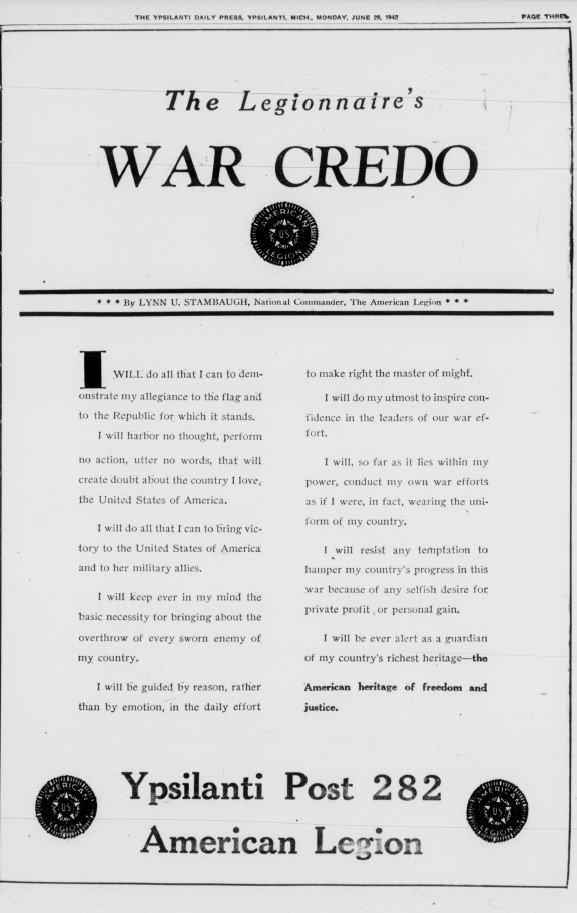
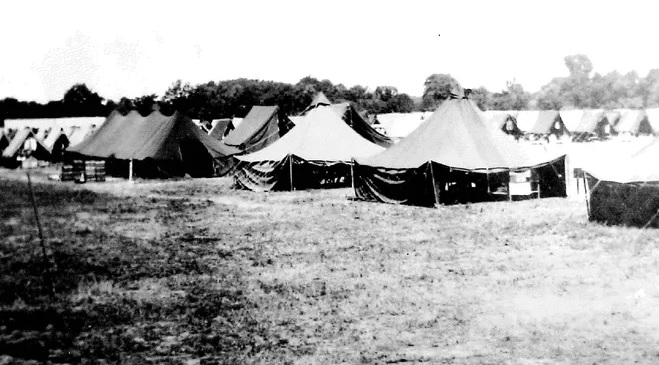
Military Experience
On April 29, 1941, Charles William Wilson enlisted in the United States Navy Reserves with a four-year contract. On July 23, Wilson terminated that contract to become an officer and Aviation Cadet. He then reported to Naval Air Station Corpus Christi in Corpus Christi, Texas, for flight training. On May 4, 1942, he earned his wings and the designation of Naval Aviator, HTA (heavier than air). Earning the rank of Ensign on May 30, Wilson remained stationed at Corpus Christi for active duty involving flying until August 14.
Flight Instructor/Specialized Training
Ensign Wilson reported to Naval Air Station Bunker Hill in Peru, Indiana on August 25, 1942 where he served as a flight instructor until December 18, 1943. On March 1, 1943, Ensign Wilson was promoted to Lieutenant, Junior Grade.
From December 31, 1943 to February 29, 1944, Wilson served as an operational student, Naval Aviator HTA at Naval Air Station Sanford, Florida. He then transferred to Naval Air Station Glenview, Illinois where he completed carrier qualification training.
Fighting Squadron 45, USS San Jacinto
On April 1, 1944, Charles William Wilson was promoted to lieutenant and on April 4 was assigned to Fighting Squadron 45, where he would fly F6F-5 Grumman Hellcats. On November 30, Squadron 45 boarded the USS San Jacinto in Guam, replacing Torpedo Squadron 51, the squadron in which future President George H. W. Bush was a member.
Between January 4 and March 21, 1945, Lieutenant Wilson and Squadron 45 participated in aerial flights against the enemy in the vicinity of Formosa, the Philippine Islands, French Indochina, Hainan, Nansei Shoto, Kyushu, Tokyo, Iwo Jima, Kobe, Luzon, Cam Ranh Bay, and Okinawa. The squadron inflicted heavy damage on enemy shipping, airfields, and installations.
These battles were meant to disrupt the Japanese supply chain in the South China Sea. By establishing air bases among these islands, particularly at Okinawa, the Allies could attack Japan from within 350 nautical miles of Formosa and Shanghai in the south and Japan in the north. Okinawa also had a surplus of vegetables and other food sources, allowing the Allies to collect much-needed supplies to continue their campaign in the Pacific.
Final Battle
Lieutenant Charles Wilson’s last flight began April 5, 1945, while leading his squadron in air raids over Kito Daito Jima’s airfields. He was last seen eight miles north of Kito Daito Jima.
His commanding officer wrote to his wife, Maxine:
Dear Maxine,
It was with the very deepest regret that I had to inform you through the Navy Department that Charlie is missing following a combat mission over enemy territory on the 5th of April 1945.
The mission of the group which Charlie was leading was to make a strafing and rocket attack upon aircraft and aircraft installations on an enemy airfield. During the attack Charlie’s plane was hit by the enemy anti-aircraft fire and was observed to catch fire in the air and to make a water landing clear of the enemy islands. The landing was evidently a very hard one as the plane was observed to break in two upon impact. Other pilots of the flight made a careful search of the area but no trace of him was seen. The area was also searched by two succeeding flights with no luck.
. . . I hardly believe it possible that he could have freed himself from the plane and come to the surface without being observed by the members of the flight who circled the exact spot for some time immediately after the accident.
. . . His work in the squadron, both flying and otherwise, has at all times been outstanding. Charlie was exceptionally well liked by each of his squadron mates. We miss him tremendously, there is just no filling his place.
On April 6, 1946, over a year after he disappeared, Lieutenant Charles William Wilson was officially declared Killed in Action. For his bravery and courage in multiple battles during the winter of 1945, Wilson received the Bronze Star, Distinguished Flying Cross, Purple Heart, Air Medal with Two Gold Stars, and the Presidential Unit Citation. He was memorialized on Court Two of the Courts of the Missing at the National Memorial Cemetery of the Pacific in Honolulu, Hawaiʻi.
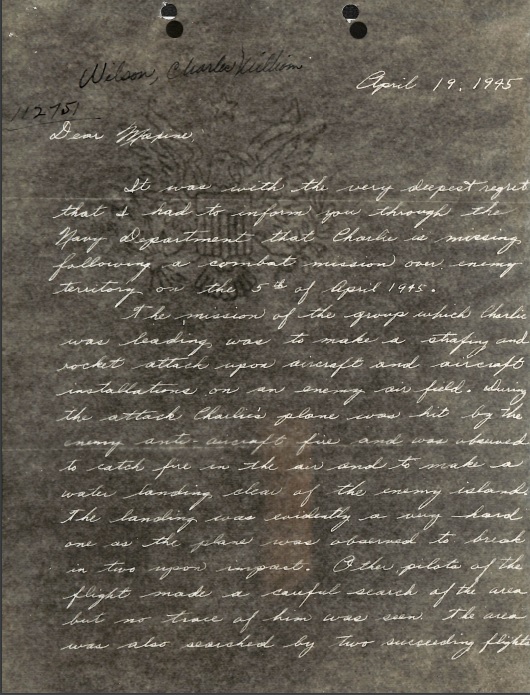
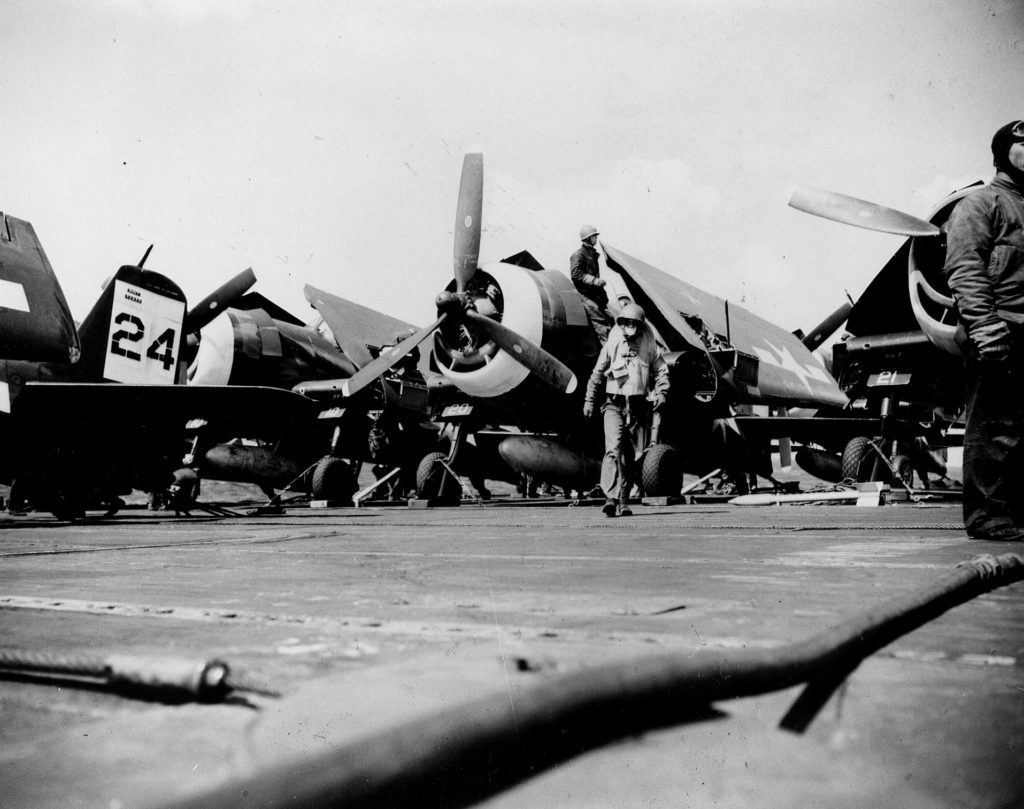
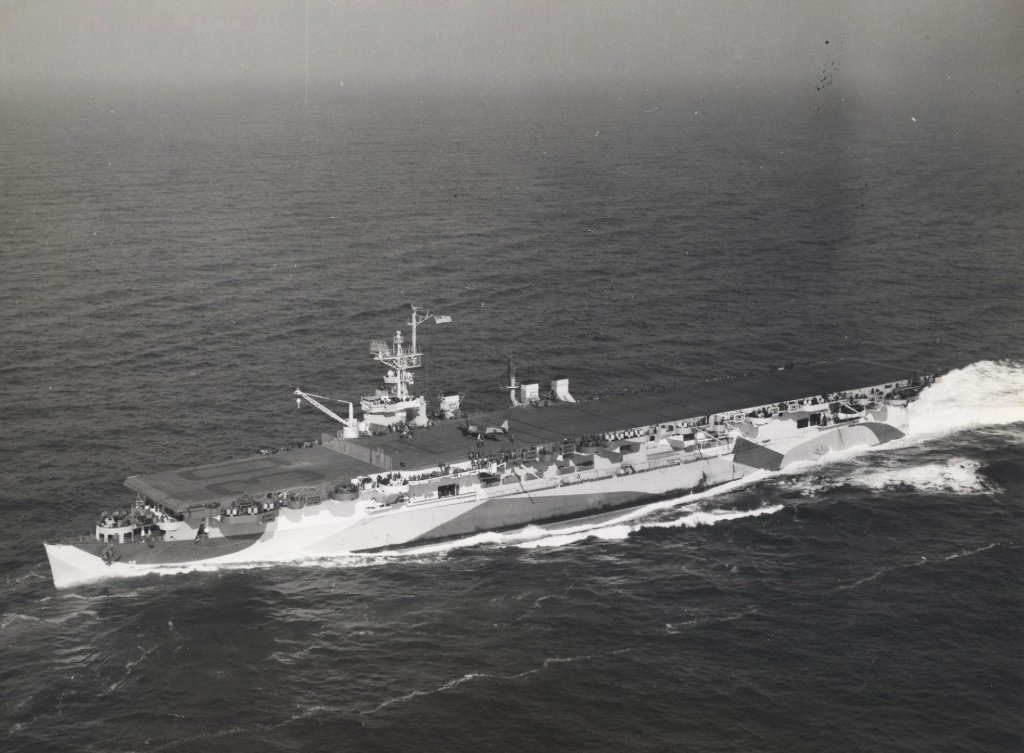
Eulogy
Charles William Wilson enlisted in the U.S. Naval Reserves on April 29, 1941. After graduating from college, he became an Aviation Cadet and officer. Earning his wings on May 4, 1942, he was stationed at bases from Texas to Indiana to Florida, working as a flight instructor while advancing his skills. On April 4, 1944, Lieutenant Wilson was reassigned as a fighter pilot with Squadron 45. His unit deployed from Guam on the USS San Jacinto on November 30, 1944.
Once underway, Wilson and Squadron 45 participated in attacks against Airfield Formosa and Japanese shipping routes at Cam Ranh Bay, cutting Japanese supply lines. During the winter of 1945, Squadron 45 supported the Invasion of Luzon and the Battle of Iwo Jima. These battles enabled the Allies to establish a foothold in Southeast Asia to attack Japan and gain much-needed resources.
On April 5, 1945, while Lieutenant Wilson participated in the Okinawa Gunto Operation, he was shot down by anti-aircraft fire eight miles north of Kita Daito Jima. Wilson attempted a water landing, but his plane split in two on impact. He was reported as Missing in Action. On April 6, 1946, Lieutenant Wilson was declared deceased. His body was never recovered.
Lieutenant Charles William Wilson made the ultimate sacrifice for his country. His service and dedication were evident through the Bronze Star, Distinguished Flying Cross, Purple Heart, Air Medal with Two Gold Stars, and Presidential Unit Citation he was awarded. Lieutenant Wilson’s role in the battles of Luzon, Iwo Jima, and Okinawa helped the United States and its Allies to secure key areas of the South Pacific that ultimately led to the defeat of Japan and the end of World War II.
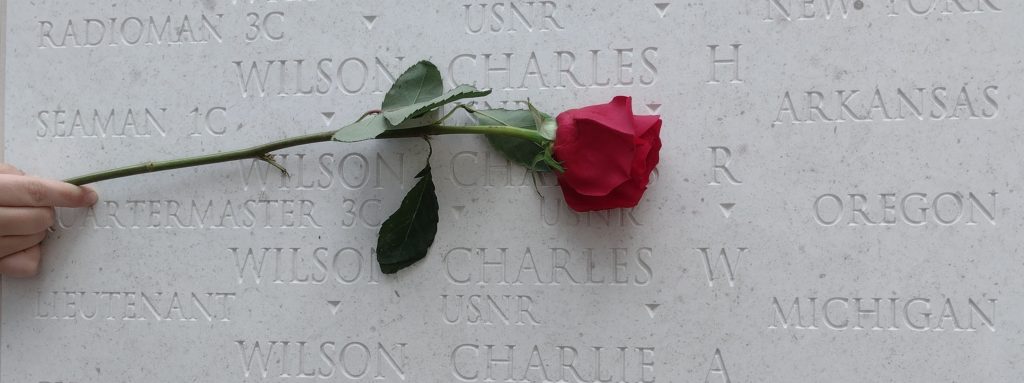

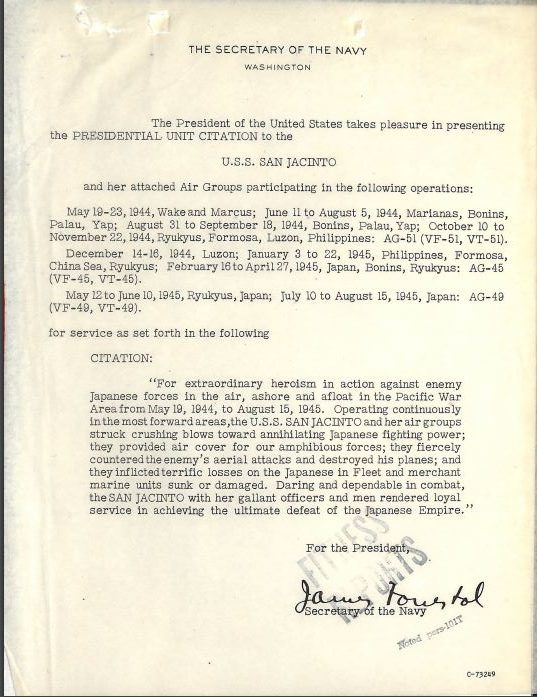
Reflection
The Sacrifice For Freedom: World War II in the Pacific Student and Teacher Institute was an experience of a lifetime. This program helped me learn more about World War II in the Pacific and personalized it. Researching the Silent Hero enabled me to study Charles W. Wilson, an individual from my home state. I learned how to find information about someone unknown to most people. The trip to Hawaiʻi brought the war to life with multiple personal stories, making even deeper connections.
During the course, the section about the Battle of Midway detailed the transition from battleships to aircraft carriers that forever changed the way the Navy waged war. This in-depth explanation helped me better grasp the impact of the battle on naval warfare. Reading about the different parts of the attack on Pearl Harbor gave me a better understanding of what truly occurred on O’ahu on December 7, 1945. Everything came together for me as I experienced being in Hawaiʻi at the exact spots where the attacks happened. The experience greatly impacted my understanding of the war, from the initial attack to the surrender on the USS Missouri in Tokyo Bay.
The Silent Hero research added to the personalization of World War II in the Pacific. We believe Lieutenant Charles William Wilson chose us. Initially, we thought he was from our home county; however, we learned that two men from Michigan had the same name. Because Lieutenant Wilson was a fighter pilot, and I aspire to serve my country in that role as well, he remained our hero.
While researching Lieutenant Wilson, there were major gaps in our information. For instance, in the 1940 census, we saw that he attended college but did not know where, so we started digging. A newspaper article announcing Wilson’s marriage to Maxine Leighton mentioned his recent graduation from Michigan State College and that he was a flight instructor. Next, we explored Michigan State’s records. There we found his class and the school division. That was just one of the many times we followed a small trail to see where it would take us. My research skills in digging into hard-to-find information improved, which will be helpful going forward in National History Day and in school.
Bibliography
Primary Sources
83rd Annual Commencement Michigan State College of Agricultural and Applied Science. Michigan State College, 1941. Accessed March 27, 2023 https://projects.kora.matrix.msu.edu/files/162-565-349/S201_1941.pdf.
“All Out, America.” Ypsilanti Daily Press [Ypsilanti, Michigan], June 10, 1944. https://chroniclingamerica.loc.gov/lccn/sn97063183/1944-06-10/ed-1/seq-3.
Bureau of the Census. 1950 Census of Population Preliminary Counts. PC-2 36. Washington, D.C.: Government Publishing Office, 1950. Accessed April 17, 2023. https://www2.census.gov/library/publications/decennial/1950/pc-02/pc-2-36.pdf.
“Bureau of Personnel Entries by Date – 1945, in Progress.” Naval History. 1945. Accessed March 27, 2023. https://www.naval-history.net/WW2UScasaaDB-USNBPbyDate1945.htm.
Charles Wilson. U.S. Navy Cruise Books, 1918-2009, Appendix 4, USS San Jacinto CVL-30. Digital images. https://www.ancestryclassroom.com/.
Charles Wilson. U.S. Navy Cruise Books, 1918-2009, Appendix 6, USS San Jacinto CVL-30. Digital images. https://www.ancestryclassroom.com/.
Charles Wilson. U.S. Navy Cruise Books, 1918-2009, Appendix 8, USS San Jacinto CVL-30. Digital images. https://www.ancestryclassroom.com/.
Charles W. Wilson, Individual Deceased Personnel File, Department of the Navy.
Charles W. Wilson, Official Military Personnel File, Department of the Navy, Records of the Bureau of Naval Personnel, RG 24, National Archives and Records Administration – St. Louis.
Charles W. Wilson. Senior Photograph and Track Team Photograph. Tecumseh High School Yearbook, 1933. Tecumseh District Library.
Charles William Wilson. World War II Draft Cards Young Men, 1940-1947. Digital image. https://www.ancestryclassroom.com/.
Charles William Wilson. World War II Navy, Marine Corps, and Coast Guard Casualties, 1941-1945. Digital image. https://www.ancestryclassroom.com/.
F6F-3 Hellcat from the Light Carrier USS San Jacinto flying over the Pacific, 1944-45. Photograph. 1944-45. United States Navy. https://ww2db.com/image.php?image_id=18168.
F6F Hellcats of Fighting Squadron VF-45 aboard Independence-class carrier USS San Jacinto off Kyushu, Japan, 18 March 1945. Photograph. March 18, 1945. United States Navy National Museum of Naval Aviation. https://ww2db.com/image.php?image_id=24561.
“Lenawee County Wins Bond Honor.” The Daily Monitor Leader [Mt. Clemens, Michigan]. April 14, 1944. https://chroniclingamerica.loc.gov/lccn/sn96077289/1944-04-14/ed-1/seq-10.
Michigan. Lenawee County. 1920 U.S. Census. Digital image. https://www.ancestryclassroom.com/.
Michigan. Lenawee County. 1930 U.S. Census. Digital image. https://www.ancestryclassroom.com/.
Michigan. Lenawee County. 1940 U.S. Census. Digital image. https://www.ancestryclassroom.com/.
Michigan. Lenawee County. 1950 U.S. Census. Digital image. https://www.ancestryclassroom.com/.
Okinawa Gunto Summary. Ike Skelton Combined Arms Research Library Digital Library. 1944. Accessed May 17, 2023. https://cgsc.contentdm.oclc.org/digital/collection/p4013coll8/id/1206/.
Penny, Prudence. “Amazing Egg Facts.” Detroit Evening Times [Detroit, Michigan], April 15, 1944. https://chroniclingamerica.loc.gov/lccn/sn88063294/1944-04-15/ed-1/seq-11.
USS San Jacinto (CVL-30). Photograph. January 23, 1944. National Archives and Records Administration (80-G-212798). https://www.history.navy.mil/our-collections/photography/numerical-list-of-images/nara-series/80-g/80-G-210000/80-G-212798.html.
USS SAN JACINTO—Report of air operations against the Ryukyu Islands & Jap Task Force, 3/23/45-4/27/45. Department of the Navy, Office of the Chief of Naval Operations. Intelligence Division. Office of Naval Records and Library. Record Group 38. National Archives and Records Administration (NAID 139986394). https://catalog.archives.gov/id/139986394?objectPage=207.
USS San Jacinto off the Philadelphia Navy Yard. Photograph. January 17, 1944. U.S. Naval Historical Center (NH 43506). https://www.navsource.org/archives/02/023005.jpg.
“Wilson-Leighton.” The Daily Telegram [Adrian, Michigan], June 10, 1942. Newspapers.com (532807).
Ypsilanti Post 282 American Legion. “The Legionnaire’s War Credo.” Ypsilanti Daily Press [Ypsilanti, Michigan], June 29, 1942. https://chroniclingamerica.loc.gov/lccn/sn97063183/1942-06-29/ed-1/seq-11.
Secondary Sources
“Charles W. Wilson.” American Battle Monuments Commission. Accessed March 27, 2023. https://www.abmc.gov/decedent-search/wilson%3Dcharles-26.
Cherry, Dan. “Lenawee County History: World War II shoe rationing implemented 80 years ago today.” The Daily Telegram, February 7, 2023. Accessed April 13, 2023. https://www.lenconnect.com/story/news/history/2023/02/07/lenawee-county-history-world-war-ii-shoe-rationing-feb-7-1943/69876881007/.
“CVL-30 USS San Jacinto.” History Central. Last modified 2021. Accessed May 18, 2023. https://www.historycentral.com/navy/CVL30SanJacinto.html.
“Dynamic Leader of Products Company.” Tecumseh Herald [Tecumseh, Michigan], April 30, 1942. Tecumseh Historical Museum. Accessed April 17, 2023. http://historictecumseh.org/world-war-ii-on-display/.
“George Herbert Walker Bush, 12 June 1924—30 November 2018.” Naval History and Heritage Command. Last modified August 29, 2019. Accessed May 21, 2023. https://www.history.navy.mil/content/history/nhhc/research/histories/biographies-list/bios-b/bush-george-h-w.html.
Haack, Hannah. “Sunnyside: A Mexican American Neighborhood in Michigan before, during and after WWII.” National Park Service. Accessed April 13, 2023. https://www.nps.gov/places/sunnyside-a-mexican-american-neighborhood-in-michigan-before-during-and-after-wwii.htm.
“History of Grissom Air Reserve Base, Indiana.” Grissom Air Reserve Base. Last modified June 2013. Accessed August 8, 2023. https://www.grissom.afrc.af.mil/About-Us/Fact-Sheets/Display/Article/174559/history-of-grissom-air-reserve-base-indiana/.
Lowe, Mary. “Teacher-student team discover story of ‘silent hero’ Tecumseh WWII pilot.” The Daily Telegram, May 28, 2023. Accessed July 20, 2023. https://www.lenconnect.com/story/news/local/2023/05/28/teacher-student-tecumseh-wwii-pilot-silent-hero/70257444007/.
“Lt Charles W Wilson.” Find a Grave. Last modified 2023. Accessed May 21, 2023. https://www.findagrave.com/memorial/56135593/charles-w-wilson.
Ostrander, Steve. “German POW Camps in Michigan.” Michiganology. Last modified September 2018. Accessed April 5, 2023. https://michiganology.org/stories/german-pow-camps-in-michigan/.
Reilly, Jr., John C., “Organization of Naval Aviation in World War II.” Naval Aviation News, May/June 1991, 26-31. Accessed May 19, 2023. https://www.history.navy.mil/content/dam/nhhc/browse-by-topic/commemorations/commemorations-toolkits/wwii/articles-on-world-war-ii-naval-aviation/pdf/ww2-11.pdf.
“San Jacinto II (CVL-30).” Naval History and Heritage Command. Last modified November 10, 2015. Accessed May 19, 2023. https://www.history.navy.mil/research/histories/ship-histories/danfs/s/san-jacinto-ii.html.
“United States Navy Casualties Bureau of Personnel Entries by Date – 1945, in progress.” Naval-History.net. Last modified April 9, 2016. Accessed May 21, 2023. https://www.naval-history.net/WW2UScasaaDB-USNBPbyDate1945.htm.
“U.S. Naval Abbreviations.” Naval History and Heritage Command. Accessed May 20, 2023. https://www.history.navy.mil/research/library/online-reading-room/title-list-alphabetically/u/us-navy-abbreviations-of-ww2/c.html.
“USS San Jacinto CVL-30 (AVT-5).” Pacific Wrecks. Accessed May 20, 2023. https://pacificwrecks.com/ships/usn/CVL-30.html.
“USS San Jacinto (CVL-30, Later AVT-5), 1944-1971.” Department of the Navy, Naval Historical Center. Last modified September 27, 2000. Accessed May 20, 2023. https://www.ibiblio.org/hyperwar/OnlineLibrary/photos/sh-usn/usnsh-s/cvl30.htm.
Wessel, Bob. “Blissfield, Once Home to a WWII German-POW Camp.” The Daily Telegram, August 25, 2020. Accessed April 13, 2023. https://www.lenconnect.com/story/news/local/2020/08/25/blissfield-once-home-to-wwii-german-pow-camp/114390652/.
Zambrano, Jr. Mike. “San Jacinto (CVL-30).” Texas State Historical Association. Last modified April 7, 2021. Accessed May 19, 2023. https://www.tshaonline.org/handbook/entries/san-jacinto-cvl-30.
